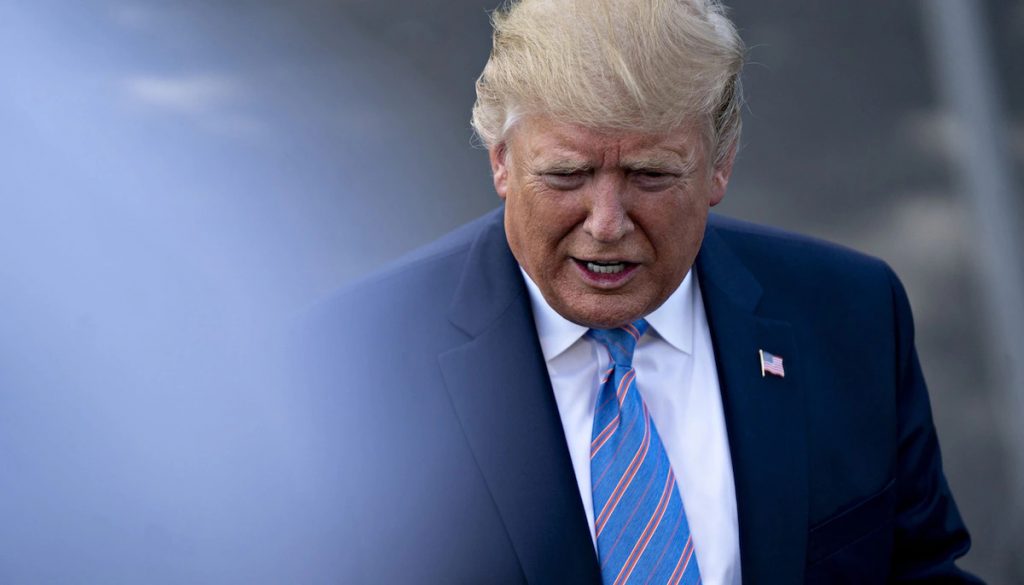U.S. News
Explaining Trump’s Claim That He ‘Declassified’ Material He Kept in Florida
Donald Trump’s latest legal jeopardy stems from the FBI’s unprecedented search of the former president’s home in which they seized about two dozen boxes of documents. The documents included 11 sets of classified material, the precise nature of which remain a secret. That’s on top of 15 boxes of documents that Trump returned to the government in January that also included classified material. The US president has broad leeway to declassify material, which Trump says he did in the case of the documents he retained. But no evidence has emerged to back up that claim.
Get 52 weeks, 6 days a week of The Wall Street Journal Print Edition for $318
What is classified information?
Federal law defines it as “information which, for reasons of national security, is specifically designated by a United States Government agency for limited or restricted dissemination or distribution.” There are three classification levels: “confidential,” “secret” and “top secret,” with access to some material further restricted by designating it “sensitive compartmented information,” available only to those with a proven need to see it.
Who decides what’s classified and declassified?
That authority is largely delegated to the bureaucracy. Agencies that create classified records also have the power to declassify them, generally in consultation with other agencies that might have an interest in that information. The higher the classification, the more senior the declassification authority needs to be.
| CLASSIFICATION | STANDARD | WHO MAY CLASSIFY OR DECLASSIFY? |
| Top Secret | Information that would cause “exceptionally grave damage” to national security if disclosed without authorization | President, the vice president, agency head or official delegated by above, for a total of 671 officials |
| Secret | Information that would cause “serious damage” to national security if disclosed without authorization | Above, plus 817 others delegated by officials with “Top Secret” clearance |
| Confidential | Information that would cause “damage” to national security if disclosed without authorization | Above, plus three others delegated by officials with “Top Secret” clearance |
Can the president declassify something by himself?
Generally, yes. A 1988 Supreme Court decision, Department of the Navy v. Egan, confirmed that the president, as commander-in-chief, has “authority to classify and control access to information bearing on national security.”
What’s the problem, then?
Get 5 years of unlimited access to the WSJ Digital Subscription for $69
No evidence has emerged that Trump, while president, declassified all of the material that wound up at Mar-a-Lago, the Florida resort where he now lives. And Trump lost the power to declassify when Joe Biden became president.
What is Trump’s explanation?
Trump has said he had a “standing order” as president that “documents removed from the Oval Office and taken to the residence were deemed to be declassified the moment he removed them.” A Trump ally, Kash Patel, told Breitbart.com that White House lawyers “failed to generate the paperwork to change the classification markings, but that doesn’t mean the information wasn’t declassified.” Some defenders of Trump go so far as to argue if the president decides something is declassified — even in his own mind, without telling anyone — that’s sufficient to declassify it.
Was there a standing order? Would it have worked?
Former Trump White House officials — including two chiefs of staff and a national security adviser have said they knew of no such standing order, and some said they would have opposed it if there were.
Such an order would still require the president to inform those charged with protecting the information that it’s been declassified, and the documents would have had to be physically marked to reflect their new status.
Get 5- years of Barron’s News Digital Subscription for $69
A 1929 legal opinion from the Office of Legal Counsel holds that while the president doesn’t need to be burdened with personally signing off on every order, they should be in writing somehow. Precedent from the Trump years suggests that even a written announcement that something is declassified is insufficient. In 2018, a federal judge agreed with the Justice Department that a Trump press release instructing the “immediate declassification” of materials related to the investigation into his campaign’s ties with Russia was not an order and they remained classified.
If Trump did declassify the material, is the whole matter over?
Not necessarily. The three federal criminal laws that prosecutors cited as the basis for the FBI search of Mar-a-Lago — laws involving removal of information related to national defense, hiding government records and obstructing a federal investigation — do not depend on the information in question being classified.
Do former presidents have access to classified information?
Most modern presidents have signed an executive order early in their tenure outlining how the process should work; Trump opted to continue the order of his predecessor, Barack Obama. That order permits — but does not require — agencies to waive the “need to know” requirement for former presidents and vice presidents. Although Biden said he was not disposed to continue that tradition for Trump “because of his erratic behavior,” Obama’s order was never rescinded or revised so it stands.









